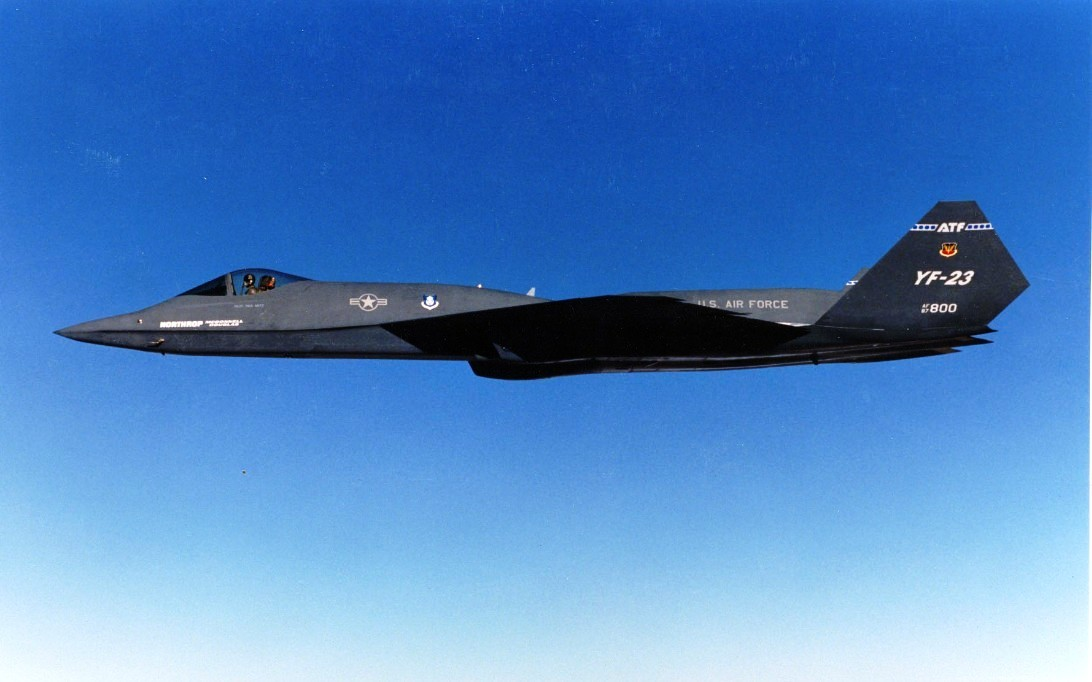
In the dynamic world of military aviation, few planes generate as much interest as the Northrop YF-23 Black Widow II. Conceived at a pivotal time in the history of U.S. defense, the YF-23 was Northrop’s daring response to the Air Force’s Advanced Tactical Fighter (ATF) contest—a competition that would determine American dominance of the skies.

By the late 1980s, things were changing rapidly. The Cold War was still ongoing, and the Air Force recognized that the F-15 Eagle couldn’t hold the torch any longer. With new Soviet fighter introductions such as the MiG-29 and Su-27, America required something brand new—faster, stealthier, and more intelligent.

The ATF mandate was for a jet that could do everything: cruise at supersonic speeds without afterburners, ghost through hostile radar, and perform both range work and close-in dogfighting. Northrop, in collaboration with McDonnell Douglas, went out to provide just that.

The YF-23 was unlike anything in the air. Its smooth, diamond-shaped wings and V-tail made it look more futuristic than practical, but they served a purpose—to disperse radar waves and keep the jet invisible. Its fuselage was curved to run smoothly without sharp angles, and the engines were recessed deep within the aircraft to reduce both radar and heat signatures. The end product was an airplane that could seemingly pop in anywhere, attack before anyone realized it was there.

Stealth wasn’t its sole party trick, however. The YF-23 was designed to be fast. One prototype was powered by a Pratt & Whitney YF119 engine, the other a General Electric YF120—both engines capable of propelling the plane to supersonic speeds without the use of afterburners. This “supercruise” capability wasn’t merely about flying quickly; it enabled the aircraft to travel farther, remain stealthier, and minimize its heat signature, all while being economical on fuel. Concealed internal weapons bays maintained their slim profile while still allowing it to deliver.

Head-to-head against Lockheed’s YF-22, the competition was fierce. Northrop’s design outdid the others in stealth and pure speed, while Lockheed’s plane emphasized agility. The YF-22 had thrust-vectoring nozzles, providing it with a maneuverability advantage in close combat. Defense analyst Isaac Seitz said Lockheed’s emphasis on agility, topped by its more robust mass production plan, ended up tipping the scales.

The YF-23’s flight tests were a spectator’s delight. The first test aircraft, dubbed “Black Widow II,” flew on August 27, 1990. Its ascension was so steep that the F-16 chase aircraft had to employ afterburners merely to stay close. Shortly thereafter, the second aircraft, called the “Gray Ghost,” joined the air.

Both jets coasted up to Mach 1.8 easily, refueled in mid-air, and performed high-speed maneuvers with minimal difficulty. There were minor glitches—such as windshield cracks during high-speed runs and initial engine teething troubles—but these were solved. On the whole, the YF-23 demonstrated that it was as effective in reality as it was on paper.

Nevertheless, when the time for a final choice came along, the Air Force selected the YF-22. Although the YF-23 was more powerful and stealthier, the Air Force valued maneuverability and thrust-vectoring more for the close combat battles that this promised, thereby giving Lockheed the upper hand. The company’s deeper connections in the defense industry and Northrop’s continued trouble with the expensive B-2 program also contributed to the choice.

Although the YF-23 never entered production, its heritage continued. Many of its innovative stealth ideas and supercruise technology were used to impact later aircraft. Engineers on the program later contributed to the development of the F-35 Lightning II and the upgrade of the B-2 Spirit. Aerospace expert Ali Osman Gündoğan noted that the YF-23’s actual importance wasn’t so much in what it would have been, but rather in how its innovations influenced the future.

Today, the two surviving prototypes rest in museums, where they continue to capture the imagination of aviation fans and inspire engineers. They never fought in combat, but they remain lasting symbols of ambition and bold design. The YF-23 may have lost the competition, but it carved out something just as enduring: a place in history as a vision of what happens when boundaries are pushed and convention is left behind.
